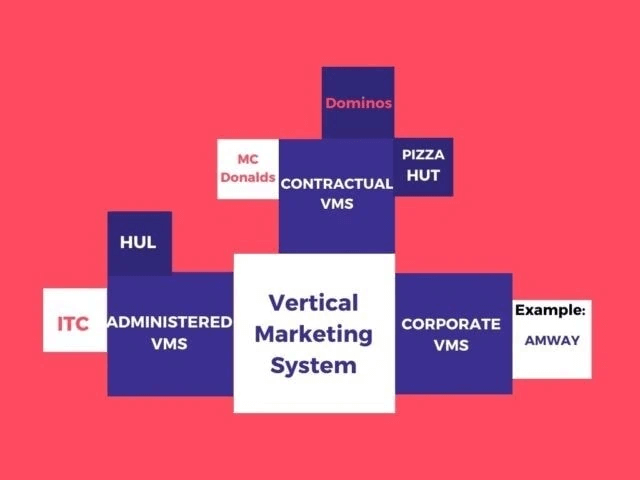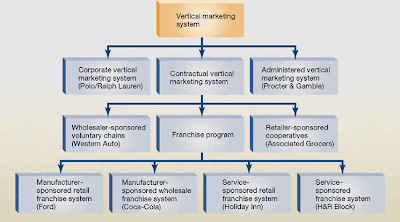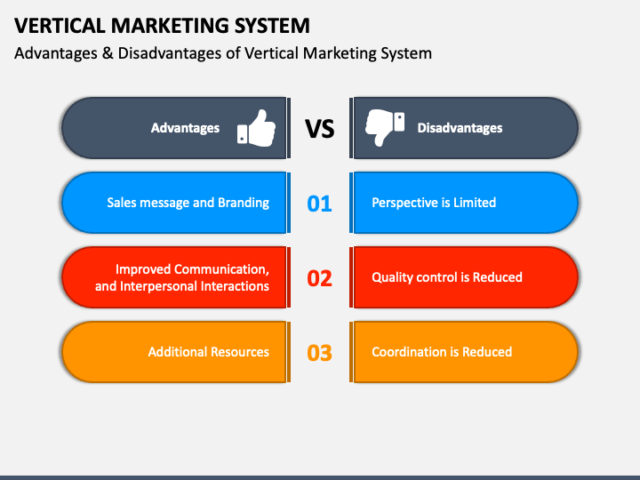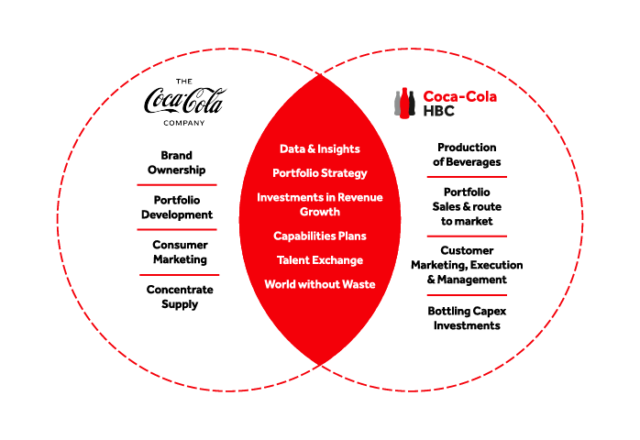
Introduction:
Have you ever questioned why certain businesses manage to control both manufacturing and retail while others find it difficult to coordinate?
What if a system existed where everyone collaborated to achieve common goal and earnings increased dramatically as a result?
In today’s fiercely competitive and technologically advanced economy, companies require smart systems in addition to robust products.
This blog will describe what a vertical marketing system is, how it differs from traditional marketing methods, and why company leaders across a range of industries, such as retail, healthcare, IT, and more, have found success with it.
A Vertical Marketing System: What Is It?
The primary players in a Vertical Marketing System (VMS) manufacturer, wholesaler, and retailer cooperate as a single marketing channel. Vertical Marketing System unifies the objectives and endeavors of all participants under a unified strategy, as contrast to typical distribution models where each member functions independently.
A Vertical Marketing System streamlines the movement of information and commodities, cutting costs, improving customer satisfaction, and decreasing inefficiencies. The system as a whole function under a single leadership structure or contract, guaranteeing uniformity in customer experience, price, and branding.
The Development of Vertical Marketing Systems in Historical Context
It is helpful to examine the evolution of distribution and marketing models throughout the past century in order to comprehend the potential of Vertical Marketing Systems (VMS).
- Channels: From Disjointed to Consolidated
Manufacturers, distributors, and retailers all functioned independently in conventional marketing channels, frequently with competing goals. Inefficiencies like uneven branding, postponed product releases, and mismatched customer experiences resulted from this divergence.
These inefficiencies led to the strategic development of the Vertical Marketing Systems idea. The concept of uniting all channel participants around a common goal gained popularity as companies looked for more influence across their operations and interactions with customers.
- Effects of Technology and Globalization
Businesses understood that deeper integration was necessary to preserve brand consistency and enhance responsiveness during the 1900s.
The internet and e-commerce transformations occurred in the 2000s. Manufacturers were suddenly able to communicate directly with customers, cutting out middlemen. Real-time decision-making, centralized data sharing, and automation were made possible by digital technologies, which created ideal circumstances for the implementation of Vertical Marketing Systems.
- The Shift to Big-Box Retail
The emergence of big-box stores like Walmart represented one of the foremost significant shifts. By controlling their distribution as well as suppliers’ networks, these businesses transformed supply chain management. Business schools frequently use Walmart’s supply chain model as an example of how vertical integration may result in operational efficiency, cost savings, and pricing power.
Real-World Example:
For instance, Walmart’s use of real-time data across hundreds of stores and suppliers to manage inventory resulted in a considerable reduction in operating expenses and an improvement in product availability, both of which are characteristics of a properly implemented VMS.
Types of Vertical Marketing System

There are three primary varieties of Vertical Marketing System, each with varying control levels and topologies.
- Corporate Vertical Marketing System
One business owns several tiers of the distribution chain in a corporate VMS. Complete control over the supply chain, from manufacturing to retail, is guaranteed by this ownership.
One business controls several supply chains tiers in a corporate VMS. Businesses that manufacture and sell straight to customers frequently use this structure, which offers the maximum degree of control.
Important attributes:
- Decision-making that is centralized
- High degree of control
- Consistency of brand
Real-World Illustration: Zara
Sector: Retail Fashion Through its branded boutiques, Zara creates, produces, and markets its own clothing. They may launch new fashions in less than three weeks because to this strict supervision.
The Reason It Works
- Quick adjustment to trends in fashion
- Inventory management that is seamless
- A consistent brand messages
- Contractual Vertical Marketing System
Written contracts between channel members are how a contractual VMS works. Franchising is among the most frequent type, when separate firms agree to function under a uniform brand and structure.
Therefore, when separate companies at various supply chain levels work together through legal agreements, a contractual VMS is created.
Important attributes:
- Official agreements
- A common brand identity
- Uniform operating guidelines
Real-World Illustration: McDonald’s
Industry: A comprehensive contract that regulates operations, customer service, and branding is followed by fast food franchisees.
The Reason It Works:
- Business model that is scalable
- Uniform consumer experience
- Economies of scale
- Administered Vertical Marketing System
To manage marketing and distribution despite official ownership or contracts, an administered VMS depends on the size and clout of one prominent channel member, usually the manufacturer or retailer to manage logistics and marketing initiatives.
Important attributes:
- Unofficial leadership
- Coordination is driven by market power
- Flexibility without being bound by the law
Real-World Illustration: Apple
Sector: Electronics for Consumers Apple’s brand supremacy allows it to control service standards, pricing, and product presentation across retail locations.
The Reason It Works:
- Compliance is ensured by market influence.
- Consistent client satisfaction
- High levels of brand loyalty
A Vertical Marketing System’s Advantages

- implified Procedures
Customer support, shipping, and inventory management are all made more efficient with a single system.
- Continual Brand Communication
The consumer experience is the same whether or not the product is purchased online or in a mall.
- Cost-Effectiveness
There are fewer redundancies, bulk purchases are feasible, and marketing initiatives are combined.
- More Authority
Companies have complete control over a product’s lifespan, from development to delivery to customers.
- Increased Contentment with Customers
The total customer experience is improved by quicker delivery, superior service, and constant quality.
Real-World Examples of a Vertical Marketing System
- Zara
Zara: Corporate Vertical Marketing System
Industry: Fashion Retail
Model Employed: Corporate VMS
From design from production to retail, Zara controls every link in its supply chain. Because of this, Zara can launch new designs in less than two weeks, which is almost unheard of in the fashion industry.
The Reason It Works
- Quick reaction to trends in fashion
- Strict inventory management
- Global brand image consistency
- McDonald’s
McDonald’s – Contractual Vertical Marketing System
Model Used: Contractual VMS
Industry: Fast Food
McDonald’s uses franchising to ensure that all of its stores follow strict guidelines for operations, food production, and customer service. Franchisees pledge to respect the brand’s principles by signing agreements.
The Reason It Works:
- Local entrepreneurship combined with global scale
- Unified identity for the brand
- Scale economies in marketing and supply
- Apple
Apple: Vertical Marketing System Administration
Sector: Consumer Electronics
Model: VMS Administration
Apple uses its market dominance to establish authority throughout its supply chain and retail environment. Despite not owning every company, Apple’s might enables them to set rules and guarantee uniformity.
The Reason It Works:
- Power over vendors and merchants
- Regular brand presentation and price
- High levels of client loyalty
Obstacles and How to Overcome Past Them
| Challenge | Solution |
| Resistance to Change | Provide training and show long-term benefits |
| High Initial Investment | Begin small, scale up as ROI becomes evident |
| Coordination across Entities | Use centralized platforms and regular sync meetings |
| Maintaining Brand Consistency | Use audits, playbooks, and standardized marketing materials |
| Legal and Contractual Complexities | Engage legal experts and draft thorough agreements |

Source: youngurbanproject.com
Vertical Marketing System in Various Sectors
There is no industry-specific restriction on Vertical Marketing Systems. Their success really crosses several industries, demonstrating their versatility and strategic worth.

- Retail: IKEA & Zara
From design to retail, Zara has complete control over the value chain. This enables them to update collections according to current trends in less as two to three weeks.
IKEA manages design, production, distribution, and retail, using mass production and cost-effectiveness to offer competitive prices.
Consistent shopping experiences in stores, inventory management, and prompt customer service are among the advantages.
- Technology: Samsung & Apple
Apple employs a combination of administered and corporate VMS. It uses Apple Stores to manage retail spaces and develops its own hardware and software.
Additionally, Samsung optimizes for supply chain management and brand awareness by vertically integrating product development, production, and international retailing.
Increased profitability, a consistent brand, and a seamless product ecosystem are among the advantages.
- Food and Beverages: Starbucks & Coca Cola
Starbucks manages procurement, roasting, and selling through its locations under a corporate VMS.
Coca-Cola maintains tight oversight over marketing and branding requirements while collaborating with bottlers throughout the world to employ an administered VMS.
Benefits include effective worldwide distribution, consistent branding, and quality control.
- Auto: Tesla
Tesla’s elimination of the dealership model transformed the automotive business. It uses its showrooms and internet platform to directly manufacture, sell, and service automobiles.
Benefits include improved customer satisfaction, clear pricing, and authority over after-sale services.
Best Practices for Putting a Vertical Marketing System in Place
- Sync Objectives Throughout the Chain
Make sure that everyone involved manufacturers, distributors, and retailers has the same goals regarding profitability, quality, and consumer pleasure.
- Make a Technology Investment
Utilize logistics software, CRM tools, and ERP systems to effectively and efficiently notify all parties involved.
- Train and Encourage Staff
Well-trained staff members can provide an exceptional client experience, whether they work for your own retail establishment or as a franchisee.
- Keep an Eye on Performance Metrics
To guarantee peak performance at every level, monitor sales, client comments, delivery schedules, and inventory levels.
- Continue to Communicate Clearly
Clear channels of communication help to avoid misunderstandings and enable quick reactions to changes in the market.
Vertical Marketing Systems: The Future
Vertical Marketing Systems are expanding even more important as e-commerce and direct-to-consumer (DTC) companies grow in popularity. Businesses must exert more control over the whole buyer journey as customers want more individualized experiences.
New Developments:
- AI-Powered Inventory Control
- Integration of Omnichannel Retail
- Vertical Integration for Sustainability
- Supply Chain Simulation Using Digital Twins
Real-World Example:
Traditional dealership models are being disrupted by companies such as Tesla, which are now employing Vertical Marketing Systems to handle not just manufacturing but also direct sales and repair of their automobiles.
Additional Examples of a Vertical Marketing System
- Amazon (Corporate VMS)
Sector: Online shopping

In addition to selling goods, Amazon also manages logistics, warehouses, and its very own delivery service. Amazon has unparalleled control over the consumer journey because to its vertical integration.
Benefits:
- Faster delivery
- Reduced expenses for logistics
- Authority over client information
- Luxottica (Corporate VMS)
Industry: Eyewear

Luxottica designs, manufactures, markets, and sells eyeglasses through retail chains including Sunglass Hut and companies like Ray-Ban.
Benefits:
- Complete quality assurance
- Robust environment for brands
- Dominance of the market
Bottling Partners and Coca-Cola (Administered VMS)
Sector: Beverages

Coca-Cola produces syrups and concentrates; manufacturing and distribution are managed by bottling partners. Coca-Cola influences these partners’ business practices by using the power of its brand.
Benefits:
- Effective worldwide dissemination
- Consistency of brand
- Local reactivity
Perspectives on Psychology and Consumer Behaviour
A well implemented vertical marketing system has a significant influence on how consumers view and interact with a brand, in addition to streamlining internal operations.

Why Customers Value Consistency?
Customers and people in general are subconsciously attracted to consistent and reliable brands. Aa a result, an emotional trust is built when a brand actually delivers an experience consistently, particularly in terms of service, product quality or price. Increased loyalty, recurring business, and favourable word-of-mouth are all results of this trust.
The Loyalty Loop: Its Scientific Basis
Consumers that obtain a uniform brand experience among channels are approximately three times more inclined to become repeat consumers, according to 2020 McKinsey research.
Brand Emotional Attachment
Every consumer touchpoint may be shaped by brands with uniform VMS architecture, resulting in a smooth journey from consciousness to post-purchase. Customer loyalty and long-term value are influenced by the emotional brand attachment that is fostered by this kind of encounter.
Data and Statistics to Encourage Vertical Management Systems Adoption:
When it applies to Vertical Marketing Systems, indicators clearly demonstrate its strategic value.
Financial and Operational Metrics:
20–30% Cost Savings: Businesses that use vertical integration to manage many supplies chain phases report 20–30% lower procurement and logistics expenses, according to Deloitte.
Faster Time-to-Market:
According to a Harvard Business Review investigation, fashion firms that are vertically integrated launch their goods 60% quicker than those who depend on independent distributors and producers.
Loyalty and Customer Experience:
Salesforce discovered that companies who consistently provided multi-touchpoint experiences a crucial component of VMS saw a 23% increase in customer satisfaction.
80% Greater Retention Rates:
Companies with a high degree of control over the customer experience (via integrated systems) have 80% higher customer retention rates than their less integrated counterparts, according to findings published by Bain & Co.
Data-driven Real-World Example:
Zara’s VMS strategy allows it to launch 20,000 new designs annually, and 85% of its goods are sold at full price, which is far higher than the marketplace’s average of 60%.
Difference Between:
Vertical Management Systems vs Horizontal Management Systems
| Aspect | Vertical Marketing System | Horizontal Marketing System |
| Structure | Unified across multiple supply chain levels | Collaboration at the same level |
| Control | Centralized or influenced by dominant partner | Shared among equal partners |
| Efficiency | High (due to coordination) | Moderate |
| Flexibility | Less flexible, but more stable | More flexible, potentially less coordinated |
| Examples | McDonald’s franchise system or Zara owning manufacturing to retail | Uber Eats or Zomato partnering with restaurants |
| Coordination | High | Variable |
| Goal | Unified brand and service | Expanded reach or capacity |
Optional Enhancements
| Content Element | Why Does It Happen? |
| Embedded YouTube Videos | Increases engagement and dwells time |
| Infographics | Makes complex structures easier to understand |
| Social Share Buttons | Encourages virality |
| Author Bio with Credentials | Boosts credibility |
Conclusion:
Are you considering putting a vertical marketing System in place at your company? Examine your present distribution model first. Determine the gaps and investigate the VMS type that best suits your company plan.
The Vertical Marketing Systems is a tried-and-true method for creating a more flexible, effective, and lucrative company it is not only a theoretical framework. Vertical Marketing Systems may be a key component of your growth plan, whether of whether you’re a heritage brand looking to optimize operations or a start-up seeking to break into a competitive industry.
Modern consumers want perfection, speed, and consistency, and your company can meet their needs with the correct Vertical Marketing Systems in place.



